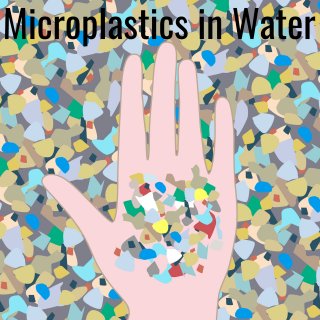Microplastics In Water
What is something that is truly indestructible? Comic book fans will say a vibranium-metal alloy, while others might say that diamonds are about as close as we’ll get in reality.
But something is being manufactured on our planet today that is genuinely indestructible.
Plastic.
That’s right: the plastic we are making today is here to stay. Not necessarily in its exact form, but plastic does not break down.
According to Chris Tyree & Dan Morrison, authors of The Invisibles: The Plastic Inside Us, “It gets worse. Plastic is all but indestructible, meaning plastic waste doesn’t biodegrade; rather, it only breaks down into smaller pieces of itself, even down to particles in a nanometer-scale — one-one thousandth of one-one thousandth of a millimeter. Studies show particles of that size can migrate through the intestinal wall and travel to the lymph nodes and other bodily organs.”
These tiny pieces of plastic are called microplastics – and we find them just about everywhere, including in our water.
What Are Microplastics?
Microplastics are tiny pieces of plastic smaller than 5 millimeters or 0.2 inches in size. For reference, that’s about the size of a pencil eraser and smaller. There are two types of microplastics: primary and secondary.
Primary microplastics are tiny pieces of plastic made to be that size. They’re used in cosmetics, clothing, fishing nets, and other products commercially produced – especially textiles.
Secondary microplastics, on the other hand, are byproducts of other plastics being broken down. Plastics we often consider recyclable (like plastic water bottles) can create these microplastics.
It can take these tiny plastic particles hundreds or even thousands of years to break down in our oceans and lakes! But it even makes its way into our drinking water.
How Do Microplastics Get In The Water?
It is estimated that there are about 14 million tons of microplastics on the ocean floor. So how exactly have they gotten there?
There is no one answer. They come from plastics used in the ocean – such as on fishing nets and clothing. They also come from plastics thrown into the ocean – such as water bottles and other plastic items. Microplastics can also come from commercial production run-off and other wastewater.
For example, waste can be produced from tire use on the road and it’ll run off into the sewers. Those sewers can impact local streams, rivers, and oceans. Even the dust from road paint, ship paint, and house paint can end up in the ocean.

The reality is that as long as plastics are in use, they will make their way into our oceans.
But what does that mean for our drinking water?
Depending on the area, microplastics have been found in freshwater, saltwater, and drinking water. Some studies have found that the United States has the most contaminated drinking water, with microplastics being found in 94% of samples.
What Are The Health Threats Of Microplastics In Water?
We can be exposed to microplastics not just in our drinking water but also in our food, air, and consumer products. When an animal ingests microplastics and then we eat the animal, we take on the microplastics because they don’t break down.
We don’t currently know all the health impacts for humans of ingesting microplastics. Some studies have indicated that exposure can lead to metabolic issues, neurotoxicity, and increased risk for cancer.
While we might not know all the impacts, Pete Myers, founder and chief scientist of the nonprofit Environmental Health Sciences and an adjunct professor of chemistry at Carnegie Mellon University, says that “there cannot be no effect.”
The best thing you can do is make sure you are getting rid of it as much as possible.
How Can You Get Microplastics Out Of Water?
To properly remove microplastics from water, you need to run the water through a filter with a pore size smaller than 0.1 micrometers. The smaller the filter, the more microplastics will be removed.
In your home, you can use a water filter or buy purified and filtered water. When investigating purified water companies, make sure to check how they filter their water. If they are not using the right filter size, they’re only removing large debris and moving the water around. A more sustainable option is purchasing your own at-home water filter with the appropriate pore size. Typically, one filter will last several months before needing to be changed. This makes it convenient and simple to use.
For your and your family’s health, it’s important to understand what filtered water is and how microplastics are removed – and the potential long-term health impacts of ingesting microplastics in water and food.
More and more in today’s world, we are being shown how important filtration is. We are exposed to microplastics in our water and food. We are exposed to smoke and pollution particles in the air we breathe.
Understanding filtration is no longer just the concern of cleanroom managers and employees. If you want to protect your and your family’s health, it is important you understand what you’re being exposed to, the potential ramifications, and how to protect yourself through filtration.
To know more, please check Lighthouse.

